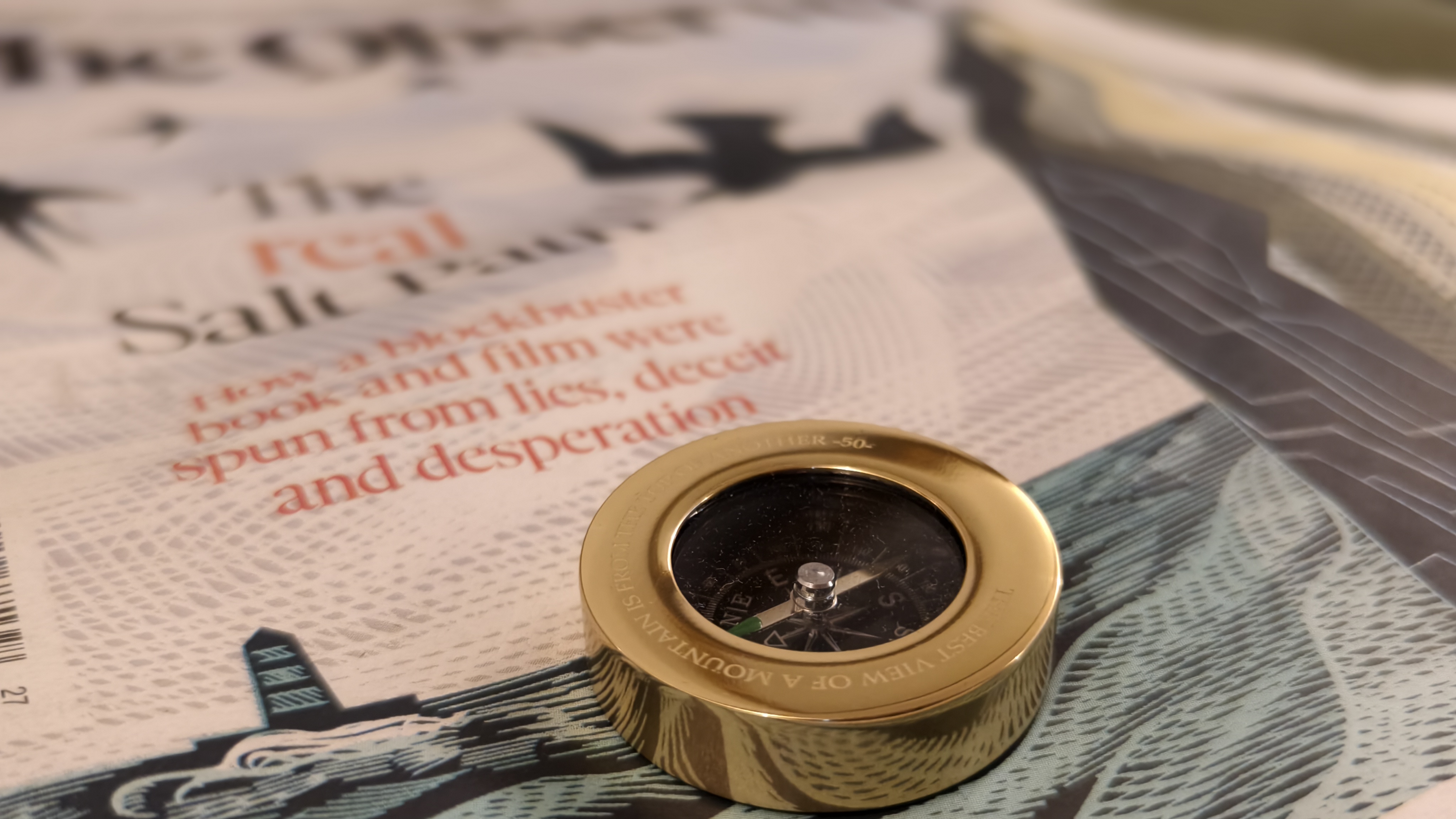What couldn’t be said at the time about Raynor Winn’s ‘The Salt Path’ yet the signs were right there all along
Some have already decided that you should never let the facts get in the way of a good story, and that embellishing a tale is part of the creative process. 'Good luck to them,' they will be saying. That's a little simplistic. Most of those commentators will not have read the details and they probably won't read this either. They won't recognise that this was more than simply the embellishment of facts, but rather that it involves the situation which became the foundation for the success of The Salt Path. There will also be those who rub their hands with glee and smile smugly at the reversal of fortunes of the writer but there are more than Raynor Winn and her partner to blame for what has happened. Public trust in publishing has been damaged and many feel they have knowingly been made to look foolish.
Every fourth person I met on the South West Coast Path in 2019 asked me about The Salt Path. I had not, and still have not, read it in full, though I skimmed sections after I had written my own travelogue. Though the treatment differed from my own, inevitably the subject matter – landmarks and headlands – was similar. Why inevitably? It covered the same narrow stretch of coastline from Minehead to Poole Harbour though Moth and Raynor Winn ended their walk prematurely in Autumn due to colder weather. In Autumn my journey had just begun.
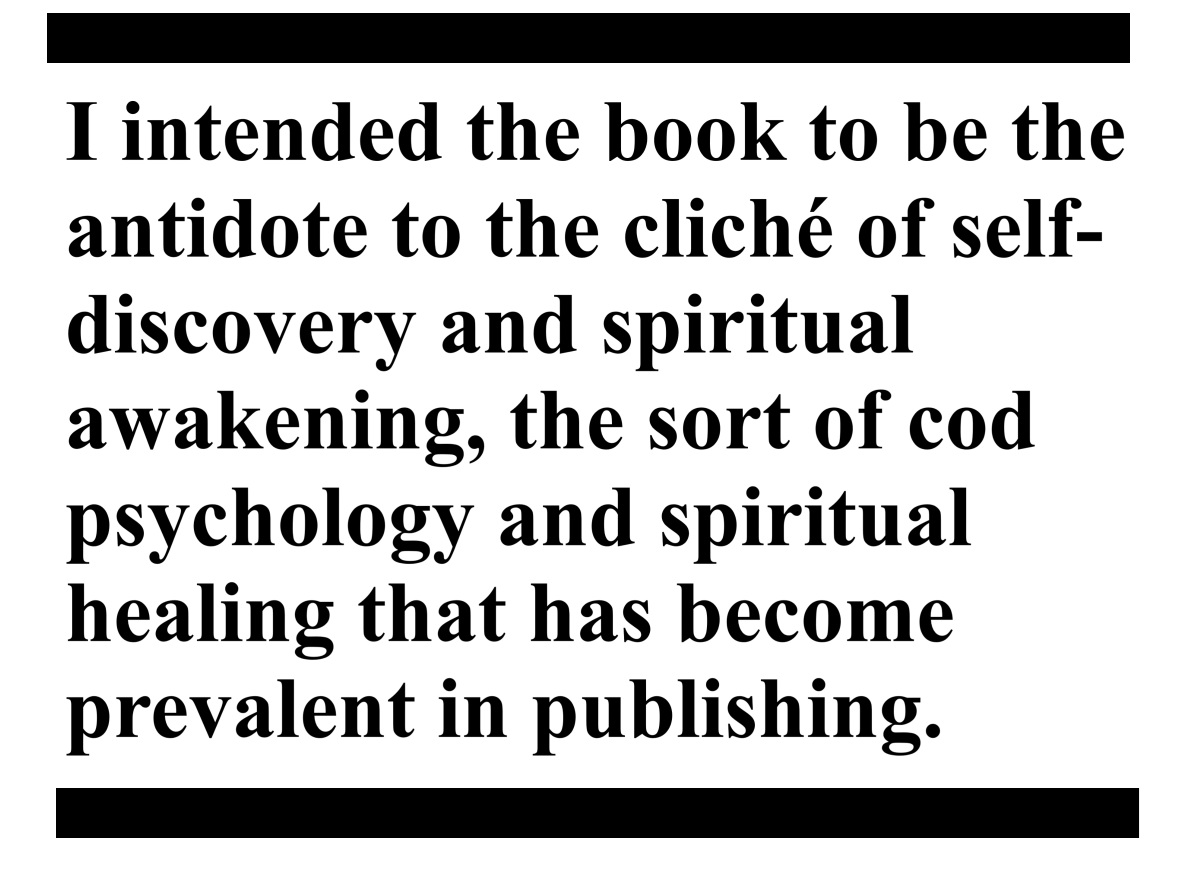
I had made a point of not explicitly mentioning The Salt Path by name in my book. This was a very different story to my own. It was not that I hadn't lost something. In fact I had a suspicion that my economically productive life may be over, though I tried not to dwell on this as I neither wanted to openly admit it for fear that it may be true, nor did I wish to encourage pity. As the bumper sticker says, ‘shit happens’, and if something has happened to you it has happened to somebody else, and more severely. Signs that I wasn't as mentally fit as I had assumed only fully came to the surface during the walk, and at possibly the worst time. It was not a conscious motivation for the walk, though. Still, trauma became a companion of sorts when I was being battered by the elements. Third man factor, or something similar, a coping mechanism while under stress.
It would be incredibly self-centred to claim my sense of loss as unique. I had a place to return to, unlike the Winns. The relatively small losses I had experienced, and the lack of a serious illness made my woes seem petty by comparison. In truth, I felt somewhat free and without responsibilities and as I have written, the Path does this to people. My story has no moment of salvation, just a realisation that I would have to look at things differently if I was to survive. That, and book a series of physiotherapy appointments.
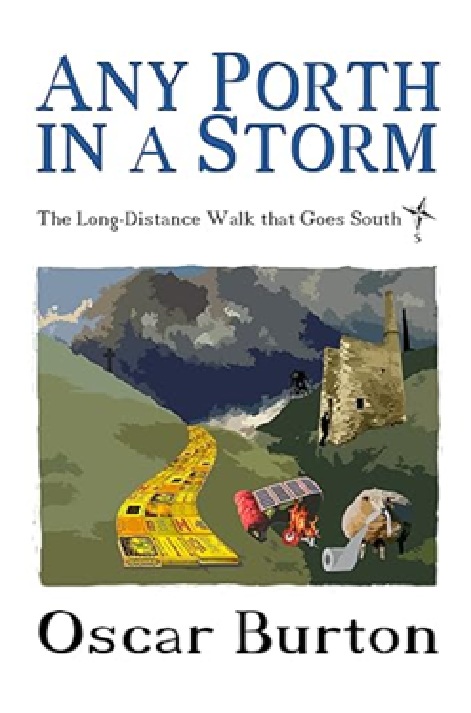
I intended Any Porth in a Storm: The long-distance walk that goes south to be the antidote to the cliché of self-discovery and spiritual awakening, the sort of cod psychology and spiritual healing that has become prevalent in publishing. Too old and jaded to embark on a journey of self-discovery, I spent a lot of time trying to understand why I was doing it. The Salt Path, by contrast, had a tidy arc and all the heartstring elements – from destitution to spiritual and physical healing. Excuse the pun, but the two characters at the centre of this had a winning walker story. The real names of the Winns, if you haven’t yet read Chloe Hadjimatheou’s article in The Observer (front page 7 July 2025), are Sally and TiMOTHy Walker.
Having just written a book about walking the South West Coast Path I didn’t want to disparage somebody else’s endeavour, yet something just didn’t feel right about The Salt Path. I've read others describe the same feeling. This is the main reason for my omission of the book’s title. I held a sense of something shady, that there was a back story I could not quite see no matter how much light I shone – something surely the publisher could if they chose to ask the right questions. Questions such as ‘what is your real name, and what about this court case?’ This, to me, was the real story yet nobody seemed to seek it. Perhaps, like me, those who had suspicions felt everybody seemed so invested in the tale, that to cast doubt on its authenticity would have felt like criticising people in desperate situations. This was the very group I had set out to support, people who had no home or occupation – truly destitute people. Best not to mention the book by name at all, though it was difficult to avoid mention of its existence as it was everywhere.
A sense of something amiss
When a construction worker on a lighthouse in North Devon revealed to me a spoiler about The Salt Path it occurred to me that this was going to be a greater challenge than I had anticipated. I had nobody to share the weight with (tent and cooking gear), and my hips were already bloodied from the pack’s support straps. Furthermore, if the walk could be done by a middle aged couple, one with a terminal neurological illness, dropping out now would not say much for my commitment. Of course, I had no idea that a deluge, a tent held down by rocks against gales, an excruciating leg injury, freezing temperatures and a haunted depression awaited me on the journey. If I had known, at least I would have had something to look forward to.

As I wrote in Any Porth in a Storm, I had told so many people that I was walking a thousand kilometres that it was the possibility of being revealed as a liar and failure that drove me on when things became so bad that it seemed more foolish to continue than to quit. I like to think that, at our core, we are all essentially cowards when it comes to our reputation. It matters how we go down in our personal histories. There is nothing noble in that. A kind Icelandic friend, partly but not completely in jest, offered to pay me to stop as he feared I would be killed in the storms that battered the coast that year (sadly, Thor himself died quite recently). He really wanted me to finish, but in one piece. These are the things that made me cover the Path, the whole Path, and nothing but the Path. It’s ironic given my adherence to covering both actual events and the actual South West Coast Path in its entirety, that Moth and Raynor Winn are merely constructs of Sally Walker’s mind, and that she lied by both omission and commission.
Some media commentators have drawn attention to the Winns bearing false names as though this is somehow suggestive of guilt. Like those other fakers George Eliot, Orwell, John le Carré, Ellis Bell and Dr Seuss. A name change is nothing unusual for authors. People change their names for many reasons. Some use another name to give gravitas. Some feel they would be taken more seriously as a man (or the ambiguity of no sex at all). Some to protect privacy, or a livelihood. Some for reasons of security and to protect people in vulnerable political situations. Anyone who has read my little book will recognise some of these elements in it. Name changes are common in authorship, though most brief biographies will allow the separation of the person from the scribe (but only assuming the facts are correct). The lack of a name was what made it so very difficult to get to the truth of this tidy redemptive story and it is where a major news agency like The Observer newspaper has the advantage. People come to them, and they have the expertise to investigate what is hidden to most of us. The real-world shadows behind the implausible Moth and Raynor Winn, from the information in the book and from the brief bio from Penguin Random House, seemed impenetrable. Pseudonyms are common, but they are rarely used to protect a dodgy back story.
After much reading around the book, reviews and online searching, I began to form a picture which resembled a shattered family portrait. What, then, at the beginning, did I feel was wrong with this picture? What irked me? I’ll start with the superficial and work up to the more fundamental.
It isn’t The Salt Path
The South West Coast Path is not, and never has been, called The Salt Path. I’m still unsure what is deemed poetic about that title. This fish and chips symbolism is lost on anyone who has spent time walking the South West Coast Path. They will recognise the main triggers of smell and taste as putrefying seaweed and caught fish. People often comment, when visiting places like Angkor, that the temples have the smell of ages. On closer inspection, this smell is bat guano mixed with the excrement of insectivorous birds. Less romantic, I know, but at least it has the ring of truth to it. History has no odour except perhaps the odd whiff of horseshit. Add the other sensory stimuli on the Coast Path and you have the sound of screeching gulls, the cutting feel of the wind and majestic views. Unless you’re a sailor, surfer or wild swimmer you will notice the presence of salt only once your home and car begin to corrode. I ate blackberries along much of the journey and don’t recall any saltiness over the sweetness. Not once, and the storm surges were fierce. Perhaps this sensory skill is a minority trait, like being able to smell asparagus in urine. Salt is a little like homelessness – most is invisible unless you make a point of drawing attention to it – or to yourself.
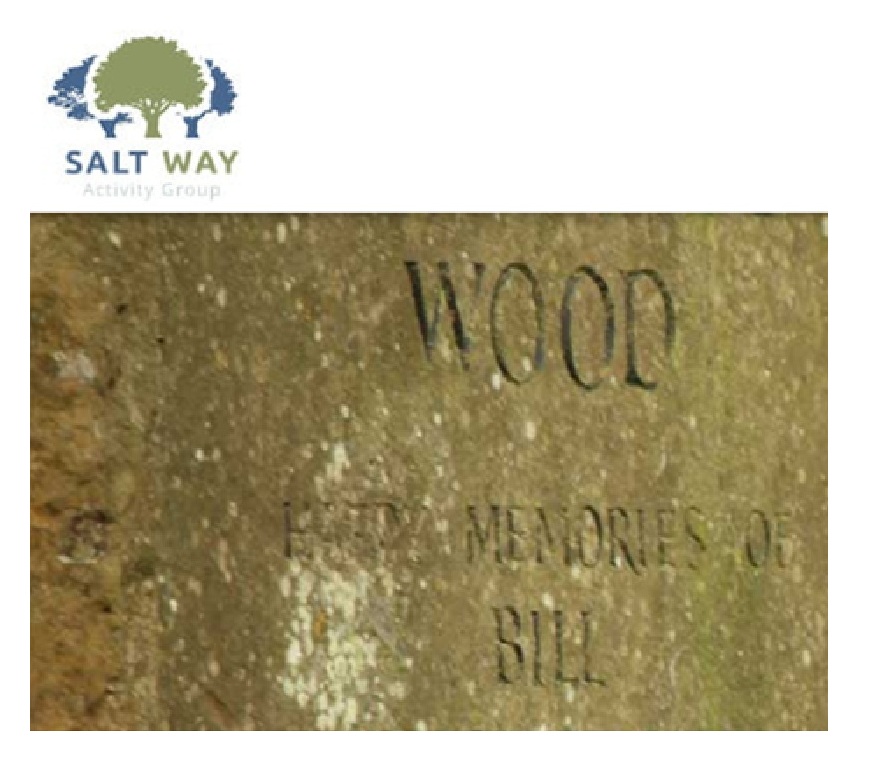
No, the South West Coast Path is not a salt path. The real salt paths, ways, roads and tracks are those described exactly a hundred years ago by Alfred Watkins in The Old Straight Track (1925). Place names which include the forms salt, whit, wych, wich and white are invariably associated with the salt trade. The paths and roads linking these places are the salt ways. There is a well-known route leading from Droitwich in the West Midlands. After this latest memoir scandal, the West Midlands may want to steal back the salt paths in the way U2 stole back 'Helter Skelter' from Charles Manson.
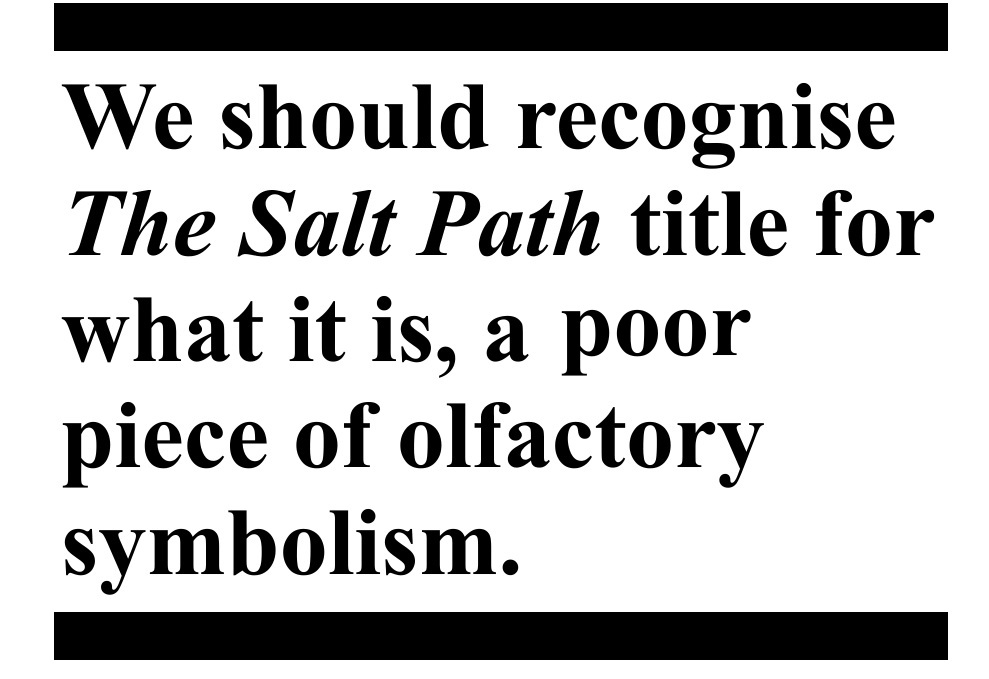
Watkins wasn’t a new age ley line hunter, he simply tried to explain the connections between places and their associated trades using evidence of old tracks and the etymologies of place names. Some of his associations on alignment are undoubtedly bunk, but the connections of trades and places have value. Ironically, in the same way that his old straight track was hijacked by new age mystics, Watkins’ salt ways were inadvertently hijacked by the Winns (Walkers) in their tale of self-discovery.
There have been angry social media responses to people who claim to have known and walked the route, yet call it The Salt Path. If you truly know it, don’t use this marketing moniker. With the revelations about the dishonesty of Raynor Winn, hopefully people will, out of respect to the South West Coast Path (or simply The Path, as the Camino de Santiago is The Way) and its people, drop this name. We should recognise The Salt Path title for what it is, a poor piece of olfactory symbolism.
The reactions of locals
There is an incident in the book which has the couple assailed by a local who finds them lying in the street and suggests they are drunk. ‘Are you tramps or something’ is a phrase which might come from an Ealing comedy. This was in Gorran Haven, a place that I had found very welcoming. It had a shop which doubled as a post office, and tripled as a bar. It had friendly owners and helpful clientele.
I should describe myself when I was there. A woman, that same day, asked me if I was eating properly and she began to explain to me the various plants which could be eaten on the coast. I was very thin and my clothes hung from me. My boots were held together with glue. I used two walking sticks and took pain killers for probably too long, due to a painful shin injury (I know, who would have thought that walking sticks might be a good idea if you have problems with your leg functioning?). I smelled of dampness and I was unshaven. The woman was lovely, and I genuinely appreciated her concern, but I wasn't of the opinion that a sea cabbage could fix my problems. It is more likely I would poison myself. I digress. The point is, nobody ever accused me of getting in the way or of being homeless, but then I didn’t tell them I was. If possible, I did not camp directly on the Path. Should it be unavoidable such as on narrow cliff sections, I camped late and struck camp early. Lying across a footpath in a town where people live (or camping on a golf course!) may, understandably, generate some animosity in locals. My guess is, it would be this – rather than an appearance of looking like a rough sleeper – that generated a hostile reaction. As I said, I looked, and probably smelled, rough and never received the hostile welcome Raynor Winn describes.
Such reactions, as I mentioned, are unlikely and so it makes the scene seem somewhat contrived. Unless, of course, you are being deliberately provocative. It is possible, with the right person at the right time, but it simply wasn’t my experience. It is true that I have been offered money on the street but that was in a city while I was saving to study public health, and cities are different places. The person who offered money (which of course I refused) was a rough sleeper, one of the invisible people but one not so blind that he couldn’t recognise someone who had been doing the same (though briefly). People tend not to notice you in the daytime if you are sleeping rough, and will not assume you are unless you offer up the information. Why should they if you are on a backpacking and surfing route in summer?
The conflicts I experienced were few and mostly comic (though one was potentially lethal) and these were usually brought on by the weight I (or my fellow travellers) carried, a pressure on the spine and exhaustion. I learnt to put down my pack if I felt a conversation coming on, groaning audibly just so they knew the effort I was going to on their behalf.
The record
There are verbatim conversations which are recorded in The Salt Path, though reviewers have commented on the completeness of these exchanges, given that these events seemed to have occurred in the distant past. People I met on the walk (who, with permission, are listed in the acknowledgments) commented that I have a good memory for dialogue especially if it was significant, but of course I wrote this soon after completing the journey. I kept detailed notes on a phone and in post-it notes stuck into my guidebook, along with hundreds of high-resolution photographs on my phone which aided recollection. Winn did something similar, 'a series of scrappy notes written in the margins of the guidebook' and two years later she transferred these to a Word document.
There is enough detail to show that most of the first half of the walk was completed by the Winns. It is described in decent weather with long days, ambling along and covering little distance per day. The film of The Salt Path (2025) (need I mention that I have not seen this either?) has been described as an advertisement for the Coast Path. I see no reason to question that they did this much.
Essentially the last 400 kilometres of the Winn’s walk is done in reverse and covers only fifty pages, including lists of coves and headlands in a rush to close the final gap in the journey. The memorable parts of this section for anyone doing the whole journey are the number of river crossings, which get brief mention in The Salt Path and are described as ferry crossings as this was done in peak tourist season. There was no wading in floodwater or being rescued. Many of the smaller ferries cease operation after summer, forcing you to negotiate your way across, or around, estuaries.
At the end of more than a thousand kilometres carrying considerable weight, my own body was not the same as when I began. I was skeletal, despite eating well (not noodles and fudge), my joints clicked for probably six months afterwards, I had migrating pains and numbness, and I had lost two centimetres in height. I walked like a Thunderbirds puppet, and I had been healthy to begin. I could not have walked those many inclines and descents and maintained balance without walking poles. The other total-distance walker I met described the same migrating clicks and pains. For the most part, Raynor Winn has described a series of short hikes in warm weather and drizzle of about 6.75 miles or 10.8km daily, or around 15,000 steps, but arduous if you have a serious neurological illness.
Being Simon Armitage by mistake
Poet Laureate Simon Armitage wrote Walking Away, about his similarly truncated walk of the South West Coast Path where, penniless, he amusingly busks his way to accommodation and food. He walked at about the time Raynor Winn said they did theirs. There is a running joke in Winn’s book about people mistaking Moth for the poet. This is hardly credible given that one is white-haired and the other dark-haired, and one hails from the East Midlands, the other from Yorkshire. Of course, had Moth recited poetry aloud this may have occurred.
Armitage was indeed walking at the time, but was behind the couple if their description can be trusted. Their trips would not have coincided until St Ives near the tip of Cornwall. In August there are so many people walking the Path it seems odd that people would mistake this man for the Poet Laureate and not any number of others who looked tired and, well… remotely like Simon Armitage. Had the couple not been such successful self-publicists we may never have known how unalike Moth and Armitage are. This, though, is comic licence and is allowed. It’s just funnier when you don’t know the truth.
The product
When I read the publisher’s blurb and some unevenly written passages (before my own walk) the book smelled like a publishing construct. Take a hard luck story and turn it into a neat circular tale of redemption. An old wise boss once told me, if you want to make a million, write a book about how to make a million.
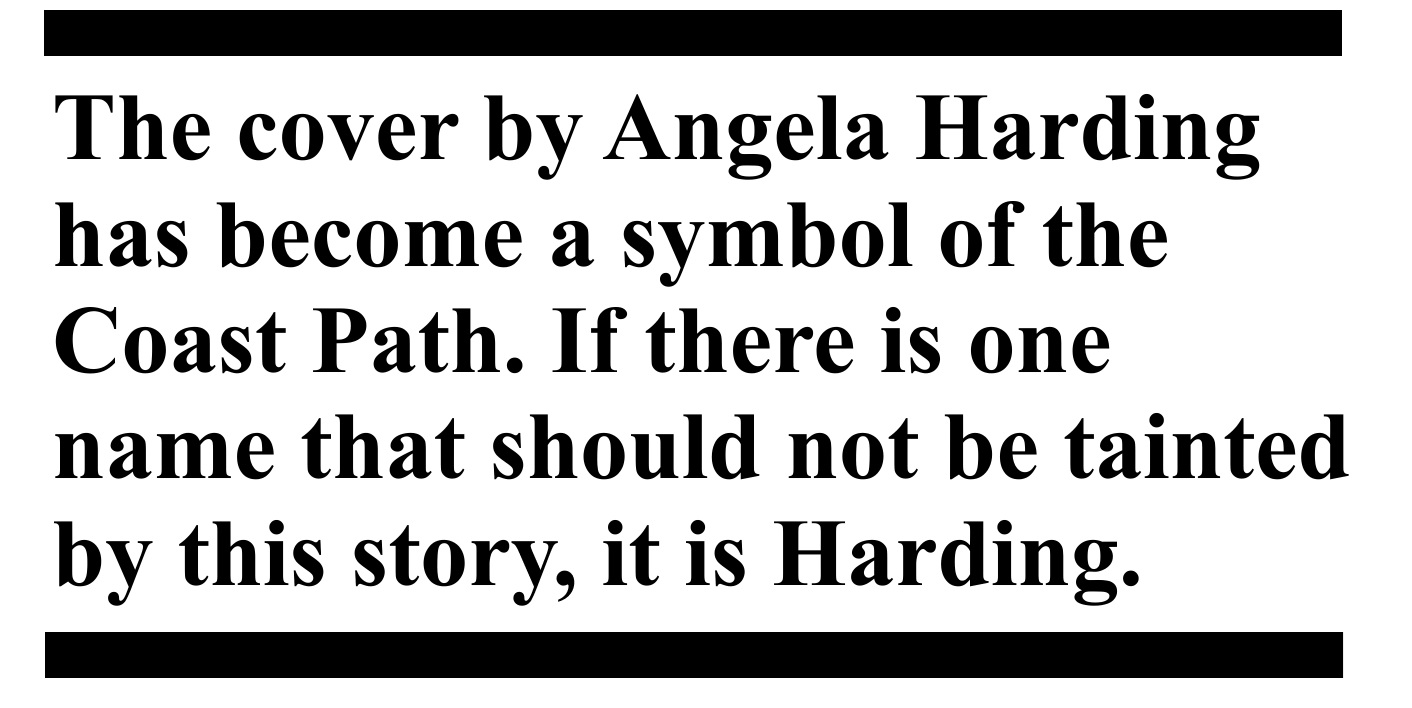
A travel guidebook by Paddy Dillon offers the overall framework for the narrative – by coincidence the same one I had used because I first walked a section in 2005. I didn’t buy an updated version since I assumed nothing would have changed. I was wrong. There were parts that had fallen into the sea and others which had been rerouted. I had met an explorer and guide who had worked with him, and so had included his description of Paddy Dillon in the book. I wrote to Dillon and he read my book in one sitting after a lengthy walk in Wales. Dillon was kind enough to allow me to use his recommendations for my own publicity, though he pointedly asked 'Who is this Paddy Dillon? The real Paddy Dillon does NOT wear shorts!' He urged me to read The Salt Path which he felt was a great true story.
The cover by Angela Harding has become a symbol of the Coast Path. If there is one other name that should not be tainted by this story, it is Harding. It really is a beautiful cover image. How emblematic this now is of the phrase ‘never judge a book by its cover’.
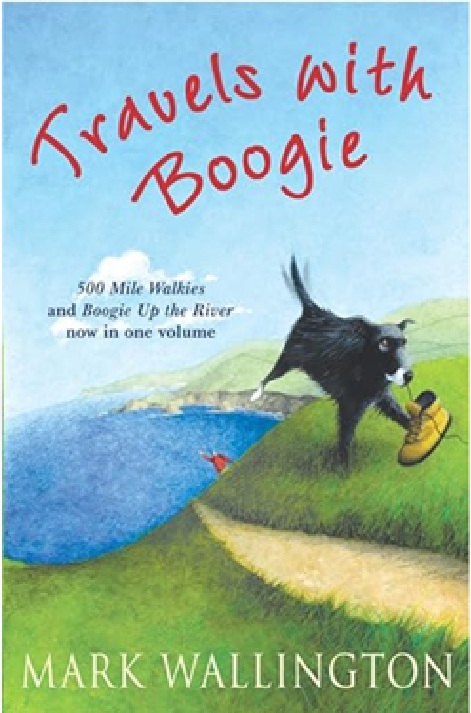
The writing style varies from eye-wateringly bad dialogue, ‘“Just washed our feet at the toilet block. Bloody stink, my feet do”’ to overdone flowery prose. ‘Rising and falling between gorse and stone, with the sea booming always. A rhythm of pain and hunger, mellowed into ache and thirst, softening eventually to just a booming rhythm. Needs slipped away as the winds chided the water and the gulls guided us forward.’ (The Salt Path 2018, Penguin Random House). The book, cluttered with poorly chosen adjectives and inappropriate metaphor, is reminiscent of secondary school creative writing hastily written late on a Sunday evening. Imagine listening to Vogon poetry over an extended distance. The eternity of deep space becomes increasingly appealing.
Individual readers have commented on these flaws. For example, from 2020, 'I think because it is an incredible set of events – losing everything, terminal illness diagnosis, deciding to walk/wild camp, it got all the plaudits, which kind of ignored the fact it's not brilliantly written.' The quality was largely overlooked in reviews by critics. Instead, the focus had been on the truth of the story and the predicament of its storyteller as victim. The quality of the writing was secondary. Now, though, comes the fall. When a creative person falls into disrepute we are often asked to separate the art from the artist. It could be considered cognitive dissonance to appreciate the art but not the artist when the artwork is autobiographical non-fiction. For me there was no internal conflict as I personally found The Salt Path largely unreadable.
If you want something entertaining and original about the coast path, read the hilarious 500 Mile Walkies (1986) by Mark Wallington. It's a title not known for its accuracy, but Wallington clearly wasn’t counting. My old student flatmate, Rick (who had become concerned about my increasingly erratic mental and physical state), recommended the book and it was wonderful. Wallington had contributed material for Dave Allen at Large and Not The Nine O’Clock News so is a comic at heart.
The character of Raynor Winn
There are elements of pettiness about the character in The Salt Path. She is described by critical reviewers as unsympathetic, whingeing, bitter, privileged and with a sense of entitlement. She is highly critical of the people she meets on the path, of those she sees as not proper walkers like herself. She is highly critical of tourists. For someone from the Midlands coming to the West Country via Wales, that is a little like complaining about the traffic while being stuck behind the wheel in a traffic jam.
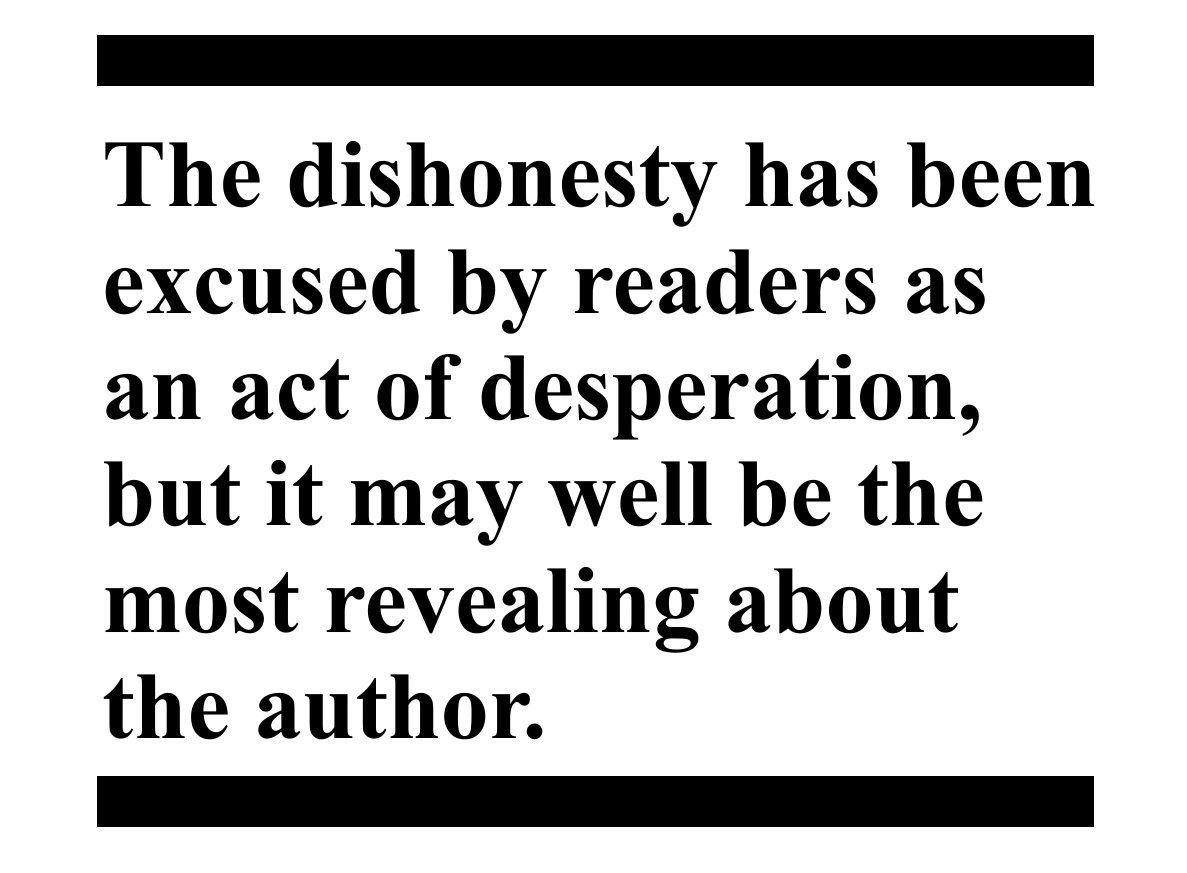
The Winns have been criticised for their dishonesty given their theft from a shop, and failing to pay for a night on a campsite. The latter had consequences for one holiday destination (a place I personally found quirky and friendly and in a spectacular location). ‘This book caused us to have a lot of problems with people leaving without paying last year as they advertise that they did this. What they wrote in the book is not true about what was said and what happened, please understand that it is exaggerated for amusement purposes.’
The dishonesty has been excused by readers as an act of desperation, but it may well be the most revealing about the author. The flawed character of Winn seeps through the pages in this petty thievery. Petty because, after all, it was only a few pounds. I wonder how many times that was said in these alleged months of accumulated embezzlement from the business in Wales. While my walk may have gone quickly south, hers seems to have lacked a moral compass. My mother often told me stories of incredibly poor families who always managed to make their children presentable when they went to school, and who never stole despite destitution. People, she said, react differently to difficult circumstances and these are the tests of true character. How would you act if you were down on your luck? It seems we know her answer if she was prepared to put this into print.
What occurs to me now, knowing how the yarn has been spun to even casual contacts along their journey, is that it is in the telling which has enabled these people to get what they wanted. Winn is experienced and knows how to manipulate an audience, whether in front of her or in front of a page. I recall very early in my trip being offered something for nothing. It was the generosity of a stranger, something I noted that rarely happened to me, and I was genuinely touched and surprised. This small kindness gave me the confidence to feel that perhaps I could complete the journey. It was only when he then pointed to my homeless charity t-shirt that I realised why it had happened (the predominantly rough sleeping journey had been partly economic, partly symbolic). 'You go free,' the man said. I had, eventually, to wash that t-shirt. In any case it made me feel slightly self-conscious and it was, alas, highly absorbent (this was the wettest period in the region since records had begun). Had I presented myself as the charity, rather than the organisation, what more could I have gotten away with?
The crisis which precipitated the journey
Much of The Salt Path describes the shadow of death, as Raynor Winn recalls Moth’s diagnosis of CBD (corticobasal degeneration). We now know whatever is wrong with Timothy Walker, it is unlikely to involve any rapid degeneration as this presentation has a survival and healthy life expectancy which Moth exceeded many years ago. Perhaps he has a less serious neurological condition. The charity which associated itself with him has severed ties, but we do not know whether this was due to the credibility of the diagnosis or being linked to a couple with a history of financial irregularities. Raynor Winn has produced letters from consultants, but none actually offers a definitive diagnosis. Instead the medics seem perplexed by the presentation, and his description of his own symptoms. The letters also post-date the walk. Notably, Raynor Winn has been careful to change her language to describe Moth as having CBS, the syndrome which includes the symptoms he experiences, despite adhering to CBD in the books. CBD is suggested by thorough exclusion of alternative pathologies and is confirmed on autopsy. The language Winn uses is also telling, being somewhat slippery. She says 'the most heart breaking [accusation] is the suggestion that Moth has made up his illness. This utterly vile, unfair, and false suggestion has emotionally devasted Moth'. The newspaper article said nothing to challenge the disease Moth suffers. The progression of his illness, several neurologists had remarked, was simply not indicative of CBD. If anyone had misrepresented the diagnosis it was Winn, not Moth, and to suggest otherwise is to take shelter behind a person who is clearly ill.
The owner of the cider orchard who gave the Winns accommodation following their ordeal (or summer holiday, whichever way you want to frame it) felt he ‘was being gaslit’ (The Observer 13 July 2025) when he read in a sequel to the book details of Moth's prognosis. He recognised that at the same time Moth had received a brain imaging scan of ‘normal’, Moth had told him, with ‘head in his hands’, that doctors had informed him to make no plans beyond Christmas. There was a witness to this emotional moment. The Winns omitted mention of this. The cider orchard meanwhile was not producing cider, as there was nobody to produce it, and the orchards were neglected as there was no tenant farmer. The owner, and his wife who was diagnosed with cancer, had to be near a hospital while the Winns were enjoying their time in the countryside. According to the interview in The Observer, when he wrote to Raynor asking for an explanation of the conflicting stories she didn't respond to the questions and moved out of the property soon after, thereafter ceasing communication with him.
In her book Raynor Winn describes a business deal where they were callously duped by an old friend, resulting in them losing their house. We know from The Observer story that Sally Walker is alleged to have embezzled money from an employer, a man who could not understand why he was working so hard yet seemed to be making no money. He was described by his widow as ‘a workaholic’. When Sally Walker (Winn) was caught with her hand in the till, so to speak, an agreement was reached in which she would repay the amount (using loaned money). She claims she simply lacked the documentary evidence for how she had accounted for the money. Like Father Ted, perhaps it was simply resting in her account. Receiving this repayment was conditional on her former employer signing a non-disclosure agreement. Criminal charges were dropped. Her former employer has since died, but his wife survives and has described the stress which he had suffered, saying that they were glad he didn’t survive to see the publication of the book as it would have been incredibly painful for him.
In her statement, Winn says that they tried to save their financial situation by running a 'book-based house raffle like others had done,' which raises more questions. How could a winner be said to have truly won the house when so much money was still owed? She had already said that they funded the property in France by 'remortgaging our home'. She recognised it 'wasn't going to work' and said that people were refunded their money, but most likely she recognised they were unlikely to get away with it. Their situation had become the focus of lawyers and financiers.
The loss of the house, rather than being through no fault of their own, was the result of a loan called in, with their house as collateral. In short, it seemed to be the consequence of embezzlement, which Raynor Winn or Sally Walker has not challenged because she simply fails to even acknowledge that it happened. She says on her website that these events were separate from the reason they lost the house. She shows no contrition. ‘I worked for Martin Hemmings in the years before the economic crash of 2008 [he died in 2012]. For me it was a pressured time. It was also a time when mistakes were being made in the business.’ Note that she does not take responsibility for these so-called mistakes. Was Hemmings responsible? Was the US market to blame? ‘Any mistakes I made during the years in that office, I deeply regret, and I am truly sorry.’ If she made mistakes. This non-apology could have been written by Post Office CEO Paula Vennells.
Saying you’re homeless does a lot for your street credibility, but it feels less credible when you own property near Bordeaux worth £20,000 which people are queuing up to buy if only they knew who owned it (Sunday Times 13 July 2025). Imagine how many Fudge fingers that could buy.
In reviews by readers, most stress that the quality of the book was in the essence of their experience, that it was a true story. Here were two people, made homeless through no fault of their own, one facing a terminal illness, climbing back out of their pit of despair. This is the success of The Salt Path. It is not because the book contains great writing; it is mediocre at best.
Victims
That the essence of the tale was false does not alter the fact that the Winns have probably become millionaires through their many book deals and film rights. This was a rags to riches story which nobody would hold against them if it were true, or even mostly true.
As it’s not true, it has left many with a sour taste in the mouth. The Salt Path, Winn says in her website denial, is ‘not about every event or moment in our lives but rather about a capsule of time when our lives moved from a place of complete despair to a place of hope.’ That capsule of time is a bitter pill to swallow and the question remains, whose despair? Who were the real victims? Certainly not the Winns.
The list of victims includes the family from whom money was taken, the stress possibly shortening the life of the business owner. It includes small businesses to whom the couple has unpaid debts. The Observer interviewed the current owner of their house who said she received letters from credit card agencies, unpaid bills, demands from debt collection agencies, a speeding fine and a message from a local business who said they owed him money. It even includes the French authorities to which, purportedly, tax was owed on the property they own (Winn denies owing anything in France). Have any of these complaints been remedied? 'If I have missed a debt, please contact me,' says Raynor Winn on her website.
There is the owner of the unproductive cider farm who let the Winns stay there for years. He was elsewhere with his wife who was suffering breast cancer while Raynor typed away, producing more bestsellers along the same theme while the orchard stagnated (The Observer, 13 July 2025).
The publication of her first book went on to expand the list of victims. It includes the millions who bought and read (or pretended to read) The Salt Path and who praised its honesty, thus inadvertently compensating the couple for their misdeeds (I say the couple, as the silent Moth is complicit in the deception). This has triggered a loss of trust in narrative non-fiction and a national sense of betrayal. What is truth anymore? This is no small thing. The sense of disappointment includes the book clubs and shops who praised the integrity of the protagonists, and all those who wrote reviews gushing with sentimentality about them.
Charities have also been duped, though sympathy may not be so forthcoming. They recognised the publicity was a promise of significant extra income. I offered a share of profits with one charity and they were enthusiastic and then ceased communication without even seeing the manuscript. I also met an environmental charity worker during the walk who was enthusiastic about the philanthropic aim of the endeavour and said that they would run a piece on it. Soon after, she explained that they could not promote the story as I had wild camped which is against the law. They later ran a series of articles on The Salt Path, a work which ties together the crimes of wild camping and theft, along with the back story of allegations of embezzlement, grifting, gaslighting and a cardinal crime against English literature. I can’t comment on whether the Winns brought along a latrine trowel but I suspect not as they didn’t bring a hat and sunscreen. It is difficult to believe that medical and environmental charities alike didn't smell something mildly fishy about this sea shanty. They bet on a winning horse, only it had been doped.
Artist Angela Harding has hardly suffered for the publicity of the book sales, but the revelations of the deceit will forever associate her style with these two grifters. Will any people want to give as a Christmas gift a jigsaw of her book cover? Unless the pieces can be rearranged to form a more realistic picture, boxes of puzzles may yet accumulate in storage.
Then there is the film. The list of victims should probably also include BBC Films though the BBC has been relatively forgiving of Raynor Winn and has given her the greatest scope for defence of her position. Think Tony Blair and his speechifying following the Chilcot Enquiry. ‘The Salt Path author’s next book delayed after “distress”.’ ‘Penguin says it did “all necessary due diligence” with The Salt Path.’ ‘Refunds as The Salt Path author pulls out of tour.’ ‘The Salt Path: Raynor Winn hits back at claims she misled readers.’ It would be forgivable to assume the Beeb was acting as her publicist following the revelations. As an investor, they surely have the most to lose if this affects US takings for the film. The shocked and disappointed crowd must extend to her publisher, Penguin Random House. Perhaps.
God only knows what Simon Armitage thought.
The publisher, film-maker and a cock and bull story
‘The Salt Path is an honest and life-affirming true story of coming to terms with grief and the healing power of the natural world…
‘In some limited cases, the names of people or detail of places or events have been changed to protect the privacy of others. The author has stated to the publisher that, except in such respects, the contents of this book are true. Any medical information in this book is based on the author’s personal experience and should not be relied on as a substitute for professional advice.’
The statement by Penguin Random House at the beginning of The Salt Path suggests that there was something not being told to the reader, which they suspected. Read between the lines. It is not a run-of-the-mill disclaimer. It sounds more like the accidental confession of Dr Nick Riviera in The Simpsons. The book is classed as non-fiction. The honest and life-affirming statement remains, at the time of writing, on their website though it is somewhat amplified there. ‘The Salt Path is an unflinchingly honest, inspiring and life-affirming true story of coming to terms with grief and the healing power of the natural world.’ Consider that removing it may give the impression the publisher is not standing by its authors. They can hardly simply remove it, at least not yet. On the other hand, combined with the blurb, it does sort of imply that a brisk walk can reverse corticobasal degeneration. They are, indeed, in a tricky position. Winn's own published writing suggests the walking held CBD at bay, though she has recently denied making any such claim. This is also tricky, given that this version is all over the internet, including on Penguin's own website. How did this affect families of people with CBD? It may have resulted in misplaced guilt for those who believed they should have pushed their family member rather than allow them to deteriorate.
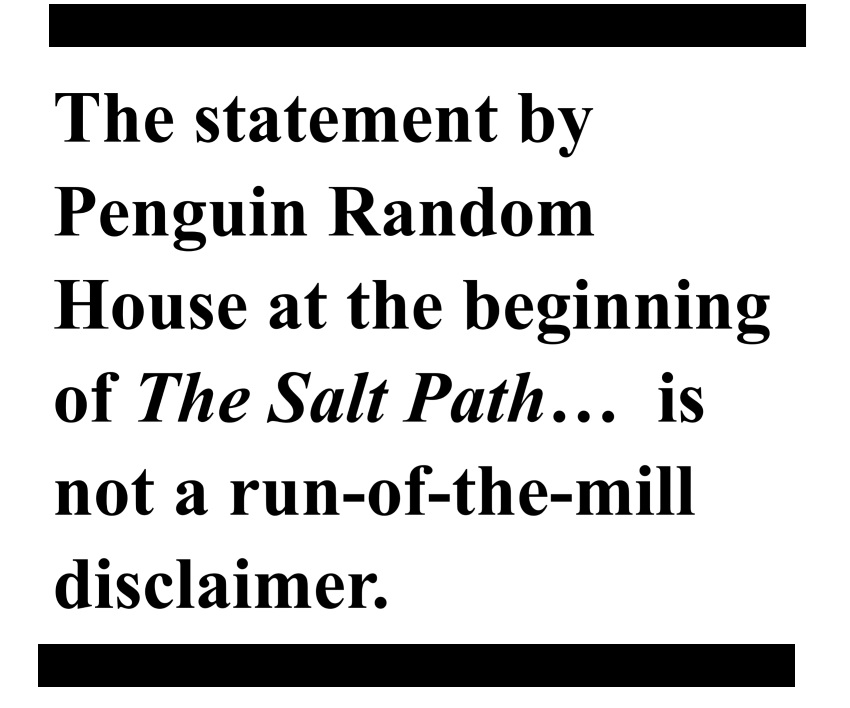
When something like a legal case is referred to in non-fiction, if there is the possibility of an alleged guilty party taking legal action – such as Moth’s mysterious former friend Cooper who supposedly precipitated their demise – the publisher’s legal team should ensure there is nothing in the text which could result in litigation. This required knowledge of their background including former names and the case to which she briefly alludes. This is the very least that could be expected.
It should have been obvious that there was a gaping hole in the narrative, over the very thing which gave the story its marketability – its authenticity. Certainly, I was unable to validate the vague references to events despite months of searching. Penguin Random House did appear to have an author contract in place relating to the veracity of the ‘non-fiction’ story. Perhaps the publisher didn’t really want to know, given that this looked like being a cash cow. This has been implied by those working in the publishing industry in the days following the publication of the story in The Observer. It was actually in the publisher’s interest to make as few enquiries as possible as this would provide the cover of plausible deniability. It looks like they may simply have gotten carried away with a story they wanted to believe in. That may be unfair. There could be a whole team of lawyers over there getting their story straight as I write.
Arguably the filmmakers would have relied upon the due diligence of Penguin Random House. Gillian Anderson, who acted in the film, had described Raynor Winn as ‘guarded’ when they first met. This is understandable. Winn had been hiding a big secret and was probably beginning to sweat as their profile increased and consequently her risk of exposure grew. Jason Isaacs was interviewed on the podcast Kermode and Mayo's Take a month before The Observer article was published. His description of the couple was clearly sincerely felt; he challenged anyone not to fall in love with them. Isaacs was both convinced that the the events described before the walk were true, and that Moth had reversed his CBD (the underlying damage to the brain cannot be reversed). Jason Isaacs and Gillian Anderson could not know that the more recent events would unfold.
Anderson, who starred in the brilliant film A Cock and Bull Story (2005) about the unfilmable The Life and Times of Tristram Shandy, may consider a sequel to The Salt Path film incorporating elements from the earlier production. A film within a film within a book. A Cock and Bull Salty Sea Tale. Steve Coogan and Rob Brydon should be included. We’re all waiting. The suspense is slowly killing us.
Oscar Burton
Still want to read The Salt Path? Buy it second-hand through charity shops, bookshops or on eBay so they receive no further royalties. As the BBC would say, other books about walking the South West Coast Path are available.
14th July 2025
 BUY
BUY
 BUY
BUY 